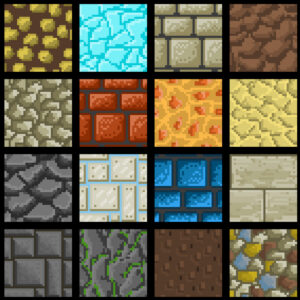beautiful green garden with apples drawn in the style of pixel art, 8 bit, 8k resolution, high detail --chaos 10 --ar 3:2 --stylize 750 --v 5 Job ID: 47eadeef-e9fb-4957-b066-dd5d08206db3
Stardew Valley, with its lush fields and friendly townsfolk, invites players into an idyllic escape where they can farm, fish, forage, and forge friendships. For newcomers eager to trade in their office attire for overalls, this Stardew Valley beginner guide is an essential companion.
One’s journey into Stardew Valley begins with a simple plot of land and endless possibilities. Gamers from all walks of life find solace in the game’s tranquil pace and engaging activities. Whether one seeks solace in solitude or thrives in connecting with the community characters, there’s something here for everyone.
This guide will light the path for beginners through their initial steps in Stardew Valley. From choosing their farm layout to planting that first crop; from delving into deep mines to building lasting relationships—every aspect beckons exploration.
With its popularity ever-surging among diverse audiences seeking a slice of countryside adventure, understanding the basics has never been more vital. This guide ensures beginners are well-equipped to start their new lives under the open skies of Stardew Valley.
Choosing Your Stardew Valley Farm Layout: A Beginner’s Overview
When embarking on their Stardew Valley adventure, players face a pivotal decision that shapes their farming experience: selecting the right farm layout. Each option presents unique challenges and opportunities, influencing not only one’s gameplay strategy but also how one interacts with the game’s world.
The Standard Farm offers ample space for crops and livestock, making it an excellent choice for those who envision vast fields of produce or a large barnyard family. It’s the quintessential starting point for beginners keen on mastering the basics of agriculture.
For lovers of fishing, the Riverland Farm provides numerous waterways brimming with aquatic life. This layout is ideal for those who prefer casting lines over tilling soil. However, it does trade land space for water, which can limit expansive crop ventures.
If mining and combat pique one’s interest more than agriculture, the Hill-top Farm features a quarry full of resources and geodes to discover. While this layout offers less arable land, it compensates with valuable minerals that can boost early-game income.
Forestry enthusiasts will find solace in the Forest Farm where renewable resources are abundant. Woodcutters can rejoice as they clear stumps and weeds to uncover hidden foraging spots and seasonal items unique to this verdant layout.
Finally, there’s the Wilderness Farm which introduces an element of danger with monsters roaming at night; perfect for thrill-seekers wanting more action while they cultivate their land.
Players should weigh these options against their preferred playstyle. Those aiming for a classic farm might opt for the Standard layout while gamers seeking variety or specific interests might choose one of the speciality farms. Choosing wisely ensures beginners have fulfilling experiences tailored just right as they lay down roots in Stardew Valley’s rich soil.
Essential Stardew Valley Tips for Planting Your First Crops
Embarking on their Stardew Valley journey, players soon discover the cornerstone of farm life: planting crops. For a successful harvest, understanding the nuances of crop selection and care is crucial. Below are invaluable tips to help green thumbs cultivate a bountiful yield.
- Choose Wisely: The first step involves selecting the right crops. Beginners should consider starting with seasonal staples like parsnips or potatoes in spring. These grow quickly and don’t require a hefty investment, making them perfect for learning the ropes.
- Seasonal Planning: Each season lasts 28 days and only certain crops can grow during specific times of the year. Planting strawberries in spring, blueberries in summer, and pumpkins in fall often yields high returns due to multiple harvests from one planting.
- Understanding Crop Cycles: It’s important to note how long each crop takes to mature. If there are 10 days left in a season, it makes little sense to plant something that needs 12 days to grow.
Here’s a quick planting guide:
- Prepare Your Soil:
- Use your hoe to till soil tiles where your future plants will live.
- Ensure you have enough space planned out; overcrowding can hinder growth.
- Sow Seeds:
- With seeds at hand, approach tilled soil and click or press the action button to plant.
- Organise your crops into grids for efficient watering later on.
- Water Daily:
- Every morning without fail, use your watering can on planted seeds.
- Keep an eye on the weather forecast—rain means nature does this job for you!
- Fertilise for Success:
- Before sowing seeds, consider applying fertiliser to improve quality or speed up growth.
- There are various fertilisers available; some increase yield while others enhance profit by producing higher-quality items.
- Monitor Crop Health:
- Watch out for crows! Scarecrows within range prevent these pesky birds from eating your hard work.
- Keep an eye out for wilted plants which indicate poor health; remove them promptly as they won’t bear any fruit (or vegetables!).
- Harvest On Time:
- Once fully grown, interact with crops to collect them but be quick—some have multiple yields if harvested promptly!
A Comprehensive Guide to Exploring Stardew Valley for Beginners
Stardew Valley’s world is vast and filled with nooks and crannies teeming with life, resources, and mystery. This guide serves as a map to the uninitiated, directing them through the game’s various avenues of exploration.
Their first brush with the great outdoors will likely be Pelican Town, the community hub where they’ll meet diverse characters and engage in seasonal festivals. It’s crucial to frequently visit this bustling locale since it houses shops like Pierre’s General Store for seeds and the Blacksmith for tool upgrades.
Just outside the town lies an expansive network of environments ripe for discovery. The Mines beckon those daring enough to dive into their depths; laden with valuable ores, these dark caverns also house challenging foes. Equip their best pickaxe and sword – they’ll need them as they delve deeper into this subterranean labyrinth.
To their west sprawls the Cindersap Forest, home to hidden treasures like leeks and dandelions perfect for early-game earnings or energy boosts. Here they’ll find Marnie’s Ranch where animals can be purchased, adding a pastoral charm to their farmstead back home.
Newcomers mustn’t miss out on the Beach south of Pelican Town either. Combing its shores could yield collectables like sea urchins or coral – especially after storms when high tides wash up rarer items useful for crafting or selling.
For anglers at heart, Stardew Valley offers tranquil spots by rivers or lakes where one can cast lines in hopes of reeling in that big catch. Fishing not only fills their coffers but also contributes to completing collections at the Community Centre – a central goal driving much of the exploration within Stardew Valley.
However, adventurers should beware: dangers lurk around corners in this otherwise serene landscape. From hostile creatures awaiting in The Mines to exhaustion-depleting health if one overexerts themselves without proper nourishment or rest – vigilance is key during expeditions.
Yet amidst these challenges lie rewards; uncovering artefacts for Gunther’s museum collection unlocks unique items, while gathering different materials leads to crafting opportunities that enhance farm efficiency and personal prowess.
Ultimately, exploration in Stardew Valley is not just about physical journeys across varied terrains; it’s about growth—learning new skills, making connections with townsfolk (and beyond), understanding cyclical patterns of nature mirrored by seasonal changes affecting available activities—and most importantly, embracing each surprise encounter as part of a rich tapestry weaving together their very own countryside saga.
Building Relationships in Stardew Valley: Planning for Your Future
Cultivating friendships and romantic connections with the local inhabitants is just as vital as tending to your crops. These relationships enrich the gameplay experience, offering both tangible and intangible rewards that can significantly influence one’s progress within the game.
Interacting with non-playable characters (NPCs) involves more than casual conversation; it requires attentiveness to their likes, dislikes, birthdays, and personal stories. Regular chats contribute to a growing rapport, but presenting them with favoured gifts truly cements these bonds. Each NPC has unique preferences – from Emily’s fascination with gemstones to Sebastian’s fondness for frozen tears – learning these can unlock special dialogues and cutscenes revealing deeper layers of their personalities.
Gift-giving isn’t a random act in Stardew Valley; it’s an exercise in building trust. Gifting something treasured by an NPC on their birthday multiplies its impact on your relationship status – denoted by heart levels – potentially unlocking new quests or benefits. Some may offer recipes or teach skills that aid players in various aspects of farm life.
Moreover, immersing oneself in community events is a surefire way to accelerate connections throughout Pelican Town. Attending festivals like the Flower Dance or Luau presents opportunities for social interaction outside of daily routines. Dancing with a villager or contributing a loved dish to the potluck strengthens relationships and weaves one into the fabric of community life.
These burgeoning ties aren’t solely about companionship; they drive forward key narratives within Stardew Valley. Marrying an NPC leads to them moving onto your farmstead where they may assist with chores, provide meals, or even bestow gifts upon you. Friendship also unlocks collaboration on projects such as building Pam a house or helping Clint confront his feelings for Emily.
Long-term benefits manifest through continuous engagement. Maintaining relationships ensures support during times of need (like when JojaMart threatens the town’s charm). Furthermore, fully understanding each resident’s backstory adds rich context and emotional depth to every encounter in this pixelated paradise.
For those planning their future amid serene rural vistas, remember that success isn’t measured solely by profit margins on produce sold—it thrives within hearts won over through kindness extended toward neighbours who become friends…and perhaps even family over shared seasons under Stardew Valley’s kaleidoscopic skies.







